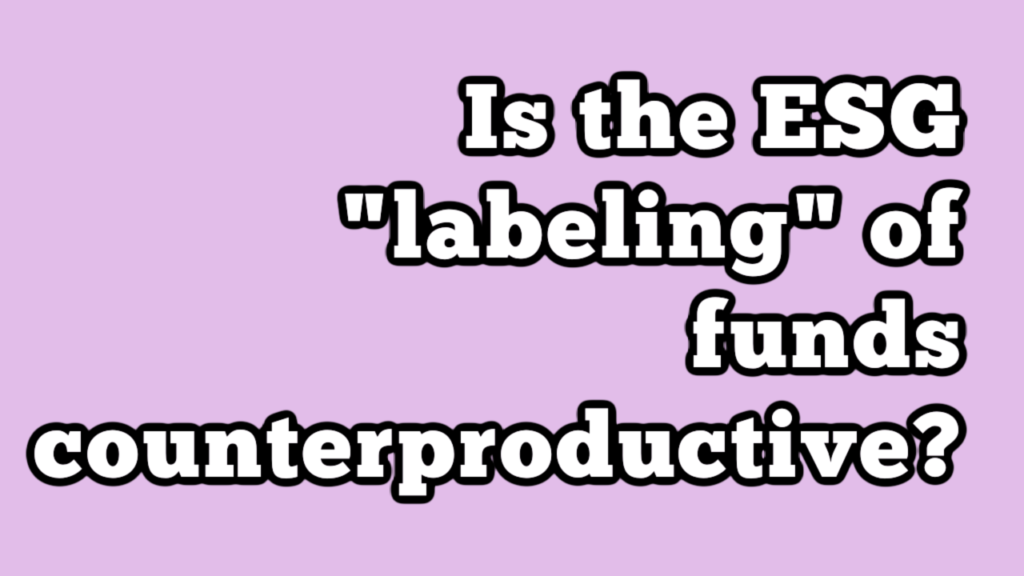Is the ESG “labeling” of funds counterproductive?

In this note, Harald Walkate analyzes this white paper entitled “Sustainable investment fund labeling frameworks: An apples-to-apples comparison”:
I thought this a rather good assessment of the whole European ESG label minefield (sorry for the poor choice of words in this ESG context…)
I have often said that “labeling” is all fine and good as long as we’re clear on what the labeling is “enabling”, and this Responsible Investor article (and the whitepaper it is based on) also illustrates this: basically it says that – even disregarding the fact that it’s basically impossible to align with all labels – much of this labeling can be counterproductive.
In other words, it does little or nothing to contribute to the financing of SDGs and it does little or nothing to counter greenwashing. And perhaps, irony of ironies, it even facilitates greenwashing. Lots of labeling, little enabling.
So, how incredibly refreshing to read some sensible observations and recommendations on this topic:
– Fund managers should play an informed and active role in policy engagement and regulatory consultations.
– Fund managers should adhere to standards that are both science-based and that incorporate elements incentivizing the real economy towards the sustainable transition.
– Labeling, to the extent it is deployed as a tick-box exercise, is frequently less impactful for achieving this goal than a spectrum of other actions such as supporting sustainability R&D and participating in collaborative engagement investor initiatives.
– The analysis in the white-paper starts with “objectives of the labels”. Also something I’ve often talked about: to judge whether or not something is effective, you first need to know what it intends to achieve. So good to see some like-minded people out there!Worth filing away in your Know-How folder under the header “Labeling vs Enabling”. As I’ve already done.
